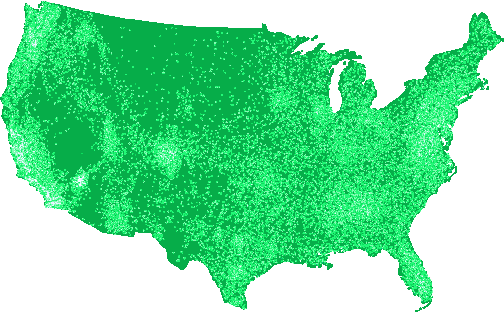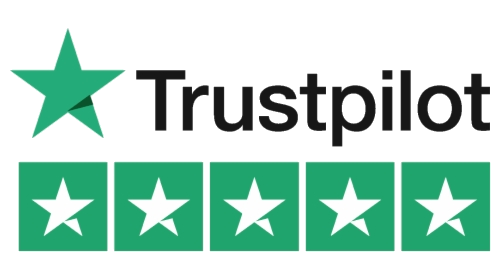Small Business Loans
Find out what you can borrow, in seconds
Updated May 26, 2023
On This Page:
- How Small Business Loans Can Help You
- The Main Types of Business Loans
- Applying for a Small Business Loan Is Easier Than You May Think
- iCapital Is a Leader in Small Business Loans and Funding
- Small Business Funding Options
- Business Loan Application Process
- FAQ: Small Business
- Small Business Resources
How Small Business Loans Can Help You
Like loans to individuals, small business loans are designed to provide needed capital to companies. However, with loans to small businesses, there are many more options and loan types. At a high level, business loans are generally categorized by the length or duration of the loan repayment period, long-term loan versus short-term funding.
Small business loans are simply funds paid out to companies that require the company to repay the loan with interest and applicable fees over a specified period of time. Because businesses vary in size and function, not all business loans are right for all businesses. Therefore, business loans involve many options and criteria for the structure including use of proceeds, capital disbursements, repayment period, interest rate or factor rates, and fees.
Small Business Funding Types

Bad Credit Business Loans

Merchant Cash Advance

Small Business Loans
-
Over 50,000
Businesses Helped -
Over $500 Milion
Funded to Businesses -
4.8/5 Customer
Rating on Trustpilot
iCapital Is Fueling The American Dream

Dollars Funded
Small Business Funded
iCapital Is A Leader In Small Business Funding
The US Small Business Administration (SBA) also has programs designed to promote US companies by guaranteeing loans made to qualifying small businesses by various lending institutions.
The most common type of loan is generally referred to as a working capital loan. These loan types are good for any business in need of working capital to promote growth. They can be used to purchase equipment, expand to new facilities, or even advertise. They are also referred to as general-purpose loans and are not earmarked for a specific use.
Small business loans can also be obtained by start-up companies as an alternative to venture capital or selling equity to investors. As highlighted above, small business loans are also critical for established businesses who experience gaps in sales, collections, or have seasonal cycles where cash flow can be tight, or when they are unable to manage day-to-day expenses or meet short-term obligations like payroll.
Once you have decided on your small business funding option, traditional lenders will use similar criteria to make a loan determination for your company. Most likely you will be asked to provide the following information about your company:
- Length of time in business
- A copy of your business plan with revenue projections
- Two years of financial and bank statements
- Annual revenues,
- Gross profit
- Net profits
- Value of any collateral, and
- Personal credit score

Traditional lending institutions like large banks, and even some community banks and credit unions are likely to offer borrowers the most favorable terms. However, they are also likely to have the strictest borrowing criteria. In many cases, if even one of the items listed above is not up to standards, they may reject the business loan request. Fortunately, a new breed of lenders called FinTech (Financial Technology) Lenders have emerged and allowed for loans to be made based upon more lenient criteria. FinTech firms have developed lending models based on sophisticated algorithms that may overlook a company’s shortcomings in certain areas and grant a loan based on overall risk-factors instead of disqualifying based on a single risk factor like the owner’s credit score.
While that has been good news for many companies previously denied credit, there are a few caveats. Borrowers should always be aware of the true cost of lending. FinTech firms do offer more lenient terms in many cases, however, they may also charge more to borrow.
Whether you are borrowing from a traditional lending institution, like a bank or from a FinTech firm, always compare the costs of borrowing. This is the same for any loan. Companies seeking loans should compare loan amounts, interest rates (and Annual percentage rate (APR)), terms and durations, fees and any penalties such as pre-payment penalties. In the case invoice factoring and merchant cash advances costs can skyrocket if the term is too long. These are short-term instruments and borrowers should understand the consequences of the costs involved. These borrowing cost analyses should be the basis in choosing between small business funding options.
Small Business Funding Options
Let’s take a closer look at the most popular small business funding options. There are many different types of small business loans. Loans issued by private lenders can take the following forms:
| Loan Type | Timeframe for Funding | Average Financing Expense | Term Length | Suitable for Small Businesses |
|---|---|---|---|---|
| Business Term Loan | Typically in as little as four days | Usually, 7%-30% Fixed or Variable interest rate | Less than 12 months up to 10 years | Those with established credit and seeking quick, affordable financing. |
| Merchant Cash Advance | Within four hours | Usually, 1.1-1.5 factor rate | 90 days up to 36 months | Those who have a bad credit history and are seeking fast working capital |
| Line of Credit | In most cases, usually within the same-day | Usually 5-30% APR | In most cases, 6-24 months | Those who want to hold funds on reserve and need access to quick financing |
| Invoice Factoring | One to seven business days | Usually between 8-50% APR | Payment due when the invoice is due | Those with a bad credit history and need instant cash flow |

"Thank you so much iCapital Funding. They got me the money I needed to expand my business. A very necessary move. Now I can move with confidence knowing I have the money in the bank to back up my plans."
Business Loan Application Process
The application process for any type of small business loan is very similar, whether it’s backed by the SBA or not. Generally speaking, lenders require that the company has been in business for a minimum of two years (alternative lenders can be more flexible in this regard), a minimum personal credit score of 600 (SBA loans require 680), collateral, personal guarantee, and that you provide a business plan and detailed financial data. Short-term loans and lines of credit issued by alternative lenders are slightly more relaxed in their qualifications: credit scores can be as low as 500, they only require 12 months in business, and monthly business revenues above $2,500.
Alternative lenders generally provide the option of completing the full application process online, without having to go through any physical paperwork.
Minimum Annual Revenue
Minimum annual revenue requirements vary according to each lender’s specific criteria, but most do insist on an amount in the ballpark of $25,000 to $75,000.
Minimum Credit Score
Though credit score requirements are less stringent with alternative lenders than with conventional ones: and some of the former even cater specifically to people or businesses with poor credit histories, a score of at least 600 is advisable in order for consideration.
Approval Time
Approval time for any type of small business loan depends on the lender. Generally, potential borrowers will receive a reply within 24-36 hours of completing their loan application. Funding time refers to the time it takes for business owners to receive their financing. Though this depends on each lender, there are some types of loans which are funded in as little as 24-48 hours, such as long and short-term online loans, and merchant cash advances. Online Invoice financing and equipment financing tends to take from five to seven business days. Loans with traditional lenders often require 14 to 60 days, and SBA-backed loans take the longest, at between thirty to ninety days.
Rates & Fees
When calculating the cost of your small business loan we’re looking at the interest rate and any additional fees. These can include origination fees, factor rates (merchant cash advances and invoice financing), guarantee fee (SBA loans), underwriting fee, and application fee. In order to get the best comparison tool we must use this information to calculate the annual percentage rate (APR). The APR considers all relevant fees in addition to the interest rate to determine a true representation of what your small business loan will cost over the course of a year. APRs also take into terms the term of the loan. This can often be misleading as many small business loan solutions, like merchant cash advances, are designed for immediate, short term use (3-6 months). When calculating the added fees the APRs can get very high indeed (100%+).
As mentioned above, many alternative online lenders do not express their charges as an interest rate at all, rather they express a percentage as a loan fee, or factor rate. Say a lender loans you $100,000, at a fee of 4.5%, with a term of six months. This is not the interest rate, it is a fee. Under this particular lender’s conditions, the fee is applied monthly to the entire original loan regardless of how much you’ve paid off. When combining all the monthly fees, and taking into consideration the rate must be doubled to get the annual percentage rate, you end up with an APR more in the neighborhood of 92.6%. For this reason most alternative lender do not advertise APRs.
We have tried as accurately as possible to provide APRs where the data is available. Traditional bank loans for small businesses hover at around 5.75%-13%. Alternative lenders offer similar low rates as well but often skyrocket for reasons explained above. Know that short term loans, with fees or factor rates, have very lenient qualifications but are notorious for translating into high APRs. However, they are sometimes the only immediate solutions for certain businesses and can be useful if you are sure the loan will create the revenue to pay it back quickly.
Minimum APR
Each loan type has highly variable requirements and specifications, which depend both on the loan itself, the borrower’s qualifications, and the lender’s policies.
- Bank term loans for small businesses feature APRs that range between 5.75% and 13%. Online term loans, be they from lenders or aggregators, range from 7.30%-98.40%.
- APRs for lines of credit can vary enormously depending on the lender. Lenders with stricter requirements tend to offer better terms, between 5.75% and 21.85%. Those who allow for a bad credit business loan or less time in business have higher APRs, commensurate to their level of risk. Because of this, lines of credit from online or alternative lenders can range anywhere from 7.77%-80.00%.
- Invoice financing has unusually high APRs across every type of lender, with rates averaging between 16% and climbing up to 76%.
- Merchant cash advances are, hands-down, one of the most expensive financing products on the market. It can be confusing to understand their rates, as well, since companies typically quote their costs as factor rates (of between 1.10 and 1.40). In order to understand the true cost of a merchant cash advance, you must multiply your total advance amount by the factor rate. This will generate an average APR of 17% to 100%+.
- Equipment financing has lower interest rates than other financing because the loan is generally secured by the equipment itself as collateral.
- SBA rates are set by the government, and can be easily verified with a quick internet search. For SBA 7(a) loans, APR rates are usually between 6.5% to 9%, whereas SBA CDC/504 loans are 3.83% to 4.56 % for the CDC part, including fees.
Business Loan Fees
- Part of the cost of a business term loan includes the associated fees, which can include a commitment or loan fee of approximately 1% of the total loan amount, and closing costs, which can range between 1-7%.
- Most lines of credit don’t have any additional fees, apart from an annual fee for lines over $25,000.
- Invoice financing APRs include all fees and interest, such as a weekly fee of 0.5% to 1% of the invoice amount, although this drops by 0.1 to 0.2 percentage point for borrowers whose clients pay their invoices on time.
- SBA loans fees are very different from other forms of financing. For instance, lenders aren’t allowed to charge an origination fee, and guaranty fees can often be more reasonable than for other loans (between 2% and 3.5%). Lenders may charge packaging fees, but these must be reasonable and in line with comparable, non SBA-guaranteed commercial loans. Finally, any fees charged an SBA borrower must be documented thoroughly at time of loan reimbursement.
Reputation
When you’re looking for a lender for your business, it’s important to verify their trustworthiness and how they stack up to their competition. To that end, it’s vital to do research on consumer-based review websites such as the Better Business Bureau and TrustPilot. Another good tip is to look up the lender in the Consumer Financial Protection Bureau (CFPB) database, which keeps records of consumer complaints. Likewise, a lender’s time in business, though not necessarily a reliable indicator of honesty, does establish a track with which to evaluate said honesty. Lastly, we wanted to make sure that each company was easy to get in contact with, as that is one of the complaints that always crops up, regardless of the type of service.
BBB Positive Reviews
The Better Business Bureau was founded in 1938 focused on advancing marketplace trust. They collect and provide free customer reviews on more than 4 million businesses, as well as provide accreditation for companies that meet their eight “Standards for Trust”, and a letter-based rating system. The total amount of positive and negative reviews are visibly itemized, and individually accessible, so customers can make informed decisions.
TrustPilot is an online review community with over 26 million reviews. Since these are completely user-generated, a good review with the company generally guarantees its legitimacy. Customers use TrustPilot’s star system to provide ratings through a customized system that takes into account factors such as depreciation over time, the Bayesian average, and each reviewer’s star score.
FAQ: Small Business
There are many different types of business loans. To understand which is the best one for you, first choose the amount and purpose of the loan, how soon you need it, how long it will take to repay, length of time you’ve been in business, its current financial shape, and the amount of collateral you have available.
The answer to these will give you a better idea of the loan type that’s best for you, and whether you should pursue a government-backed loan, a bank loan or line of credit, or seek out an alternative lender for a line of credit, loan, or cash advance. Loans can be used for obtaining working capital, equipment or building purchases, remodels or construction, and in some cases, to refinance business debt. Other types of loans are merchant cash advances (loans based on on the volume of your business’ credit card transactions), professional practice loans (designed specifically for providers of professional services like healthcare, accounting, or engineering), and franchise startup loans.
Government-backed Small Business Administration (SBA) loans provide a guaranty that enables a bank or alternative lender to extend credit it might otherwise have declined. They can be used for a wide variety of purposes, but have generally strict qualifying requirements, additional paperwork, extra fees, and take longer for approval.
Bank loans or lines of credit are the traditional way to fund businesses, but since the Great Recession of the late aughts, getting approval has become more difficult. They tend to carry low interest rates, and approval is slightly faster than SBA loans. However, repayment terms are generally shorter, and often include balloon payments of the outstanding principal sum, interest-only having been paid until then.
Alternative lenders have gradually become pervasive in the lending marketplace, offering loans to startups and small businesses with less than stellar credit history. Their approval requirements are considerably less stringent than for the two previous types of loans, applications are typically fully completed online, approval decisions are quick, and funding can arrive in less than five business days. Interest rates and associated fees can be substantially higher than with traditional lenders, however, as these loans generally carry higher risks.
You must have both good personal and business credit scores in order to qualify for an SBA-backed or traditional bank loan. Alternative lenders, while they do take credit history into account, generally have more lenient requirements, and place more emphasis on the business’ cash flow and track record.
- Credit history. Most lenders want to see how you’ve handled debt in the past, whether you made all of your payments on time, and how much debt you already have.
- Time in Business. The longer your company has been around, the more likely it is to stick around in the future. Lenders like seeing that your business isn’t something brand new.
- Revenue. You should be able to show any potential lender that your company has made consistent money in the past, and that it’s continuing to generate money.
- Business Plan. What are you going to do with your new money? How does new financing help your business grow?
- Financial Documents. You’ll need documents to display the facts about your business. Your profit/loss statements, tax returns, bank statements, and other financial documents show potential lenders how well you handle money.
Business loans can be used for a number of different operational needs. Some traditional bank loans may have specific conditions or limits on usage, but loans and financing designed specifically for small businesses can be used for nearly everything, including equipment purchases, inventory, daily expenses, and payroll.
Other uses can encompass the purchase of new technology, hiring, marketing or advertising, education and training, and finally, expansion. In the case of loans guaranteed by the Small Business Administration (SBA), there are generally specifically permitted usages.
SBA 7(a) loan proceeds can be used to pay long and short-term operational expenses, to purchase real estate, as revolving funds, to renovate or construct a new building, to establish a new business, and under some circumstances, to refinance existing business debt. These funds cannot be used to refinance existing debt where the lender would receive a loss, to repay delinquent taxes, to affect a partial change of business ownership, to reimburse funds to any owner, or for any purpose that the SBA doesn’t consider sound.
SBA 504 loans, or Community Development Corporation (CDC) loans, are strictly for real estate and equipment purchases. This program is unique in that it pairs a CDC with a lender, and they finance the loan jointly. Finally, the SBA also features microloans, in which they provide funds to nonprofit organizations, who in turn, lend the money to the business.
A business line of credit is an arrangement between a financial institution and a business that establishes a maximum loan balance that the lender permits the borrower to access or maintain. Borrowers can access funds at any time, as long as they don’t exceed the agreed-upon maximum amount or any other requirements set by the financial institution.
Lines of credit are revolving accounts generally unsecured by collateral. This means that borrowers can spend the money, repay, and then spend it again, in a virtually never-ending cycle. Repayment can be adjusted as needed, opting for minimal monthly payments or settling the entire outstanding balance at once. This differs from installment loans, in which borrowers receive a lump sum, and repay it in equal monthly installments.
Invoice factoring is a type of accounts receivable financing that converts outstanding invoices due within 90 days into immediate cash. Businesses pay a percentage of the invoice amount to the lender as a fee for borrowing the money, while the lender limits its risk by not advancing the full invoice amount.
Invoice factoring can work in various different ways, but the most common is known as factoring. In this case, the company sells its outstanding invoices to a lender, who then pays them between 70% and 85% of what the invoices are worth. When the lender receives the remaining balance, it then remits the remaining 15% to 30% to the business, which in turn, pays interest and/or fees for the service.
Another alternative is invoice discounting. This is structured similarly to factoring, but the business itself collects the invoice payment, not the lender. The lender can advance up to 95% of the total amount, and upon customer payment, the business then repays the lender, minus a fee.
A merchant cash advance is a lump sum of capital that is repaid automatically using a fixed percent of your daily credit card transactions. They are not loans, but rather an advance based on a business’ future revenues.
Merchant cash advances view risk differently than lenders of traditional loans do, focusing daily receivables or credit card receipts rather than on credit criteria. Rates are typically higher than for other small business financing options, such as loans, but qualifying is substantially easier.
Online lenders are great options over banks, when businesses are younger, or can’t meet a bank’s requirements for borrowing. To qualify for SBA-backed and traditional bank loans, businesses need excellent credit, strong business revenue, and zero defaults on taxes or government loans.
Online and alternative lenders analyze both traditional credit standards, (such as personal credit score, revenue records, and cash flow), as well as nontraditional metrics like social media and vendor payments. This emphasis on alternative qualifiers enables non-traditional lenders to fund so-called higher-risk businesses, such as startups or clients with poor credit scores. These loans are also easier to apply for, as the whole process can be completed from the comfort of your home or office computer. Approval or denial also tends to process much quicker than with traditional lenders.
Business loans costs are different for each borrower, as rates depend on a number of factors, unique to each business. However, borrowers should always keep in mind all the associated costs of the loan, including interest rates, APR, factor rate as applies, and any fees for costs such as origination, application, guarantee, late payment or prepayment penalty, check processing, and underwriting.
SBA 7(a) loans also require a guaranty fee of between .25% to 3.75% for the part of the loan that is guaranteed by the agency, depending on the size and maturity date of the loan. Since SBA loans are government regulated, interest rates are set. For June 2017, maximum interest rates on SBA 7A Loans range from 6.25 % to 8.75 %, and currently range from 3.84% to 4.39 % including fees for the CDC portion of CDC / 504 loans.
As a general rule of thumb, the company’s expected profits from the use of the business loan should be greater than the loan’s total cost, and the business should generate enough cashflow to be able to easily cover the monthly payments. Repayment terms also vary depending on the lender and the loan purpose, which affects the total sum the borrower must repay.
Small Business Resources
The iCapital Businesss Loan Insider blog is full of timely articles that will help youunderstand some of the challenges faced by many small business owners like yourself. From new products for small business loans business loans, to emerging trends and regulation, iCapital is engaged in the business of small business loans ownership at many levels.If you have a story idea you would like to share or want us to cover specific topic such as small business funding, small businessoperations or marketing, let us know and we will try to add it to an upcoming article or social media post.
How Do Business Loans Work?
In the ever-evolving landscape of commerce, business loans emerge as pivotal instruments, propelling both nascent startups and well-established entities toward...
Choosing the Right Supplier for Your Small Business
As a small business owner, navigating the complexities of the supply chain can be a challenging endeavor. Selecting a supplier...
What Kind of Profits Can You Expect With Your Small Business?
For small business owners, understanding and managing profit margins is key to achieving success and sustainability. In this comprehensive guide,...









